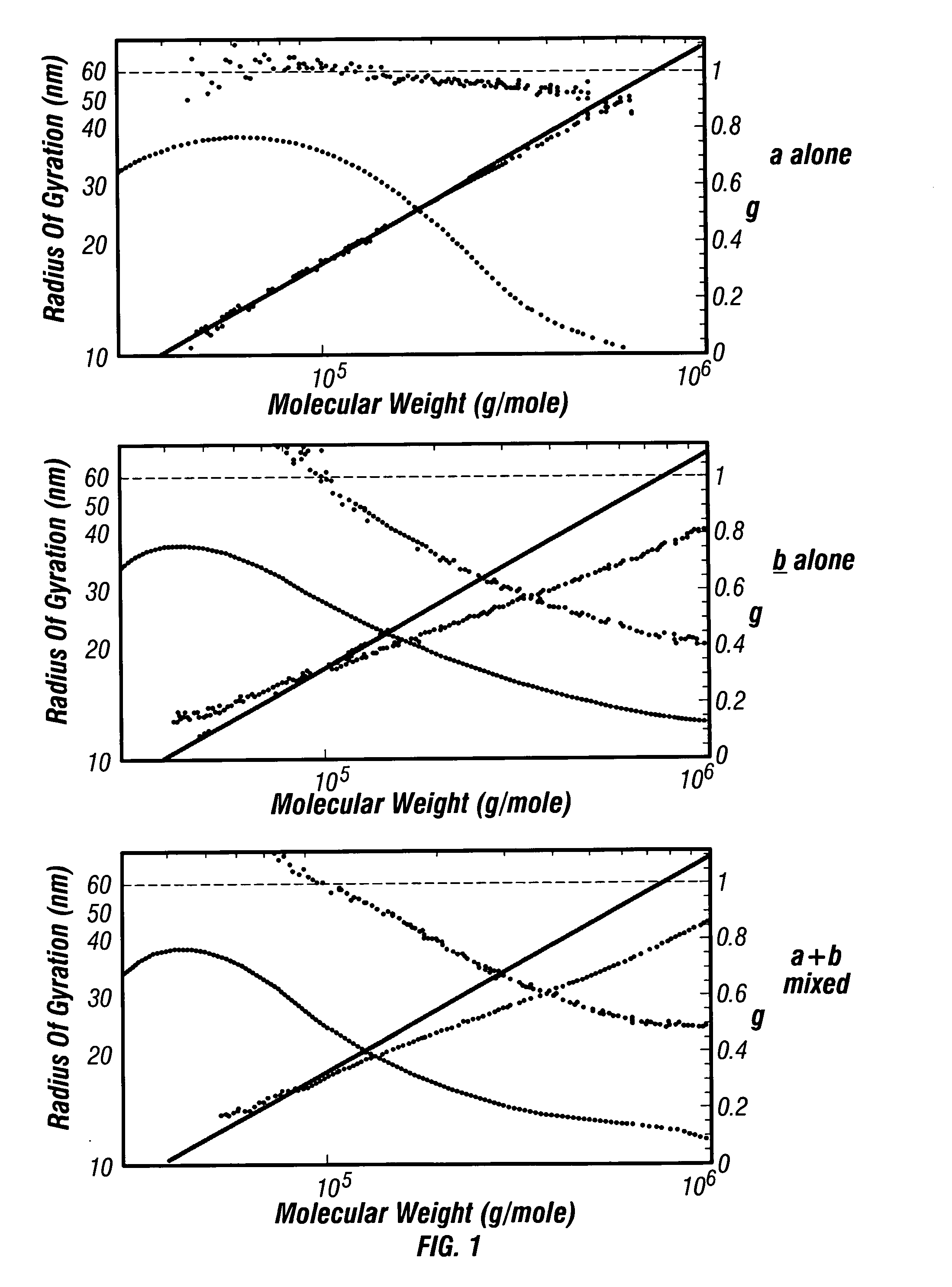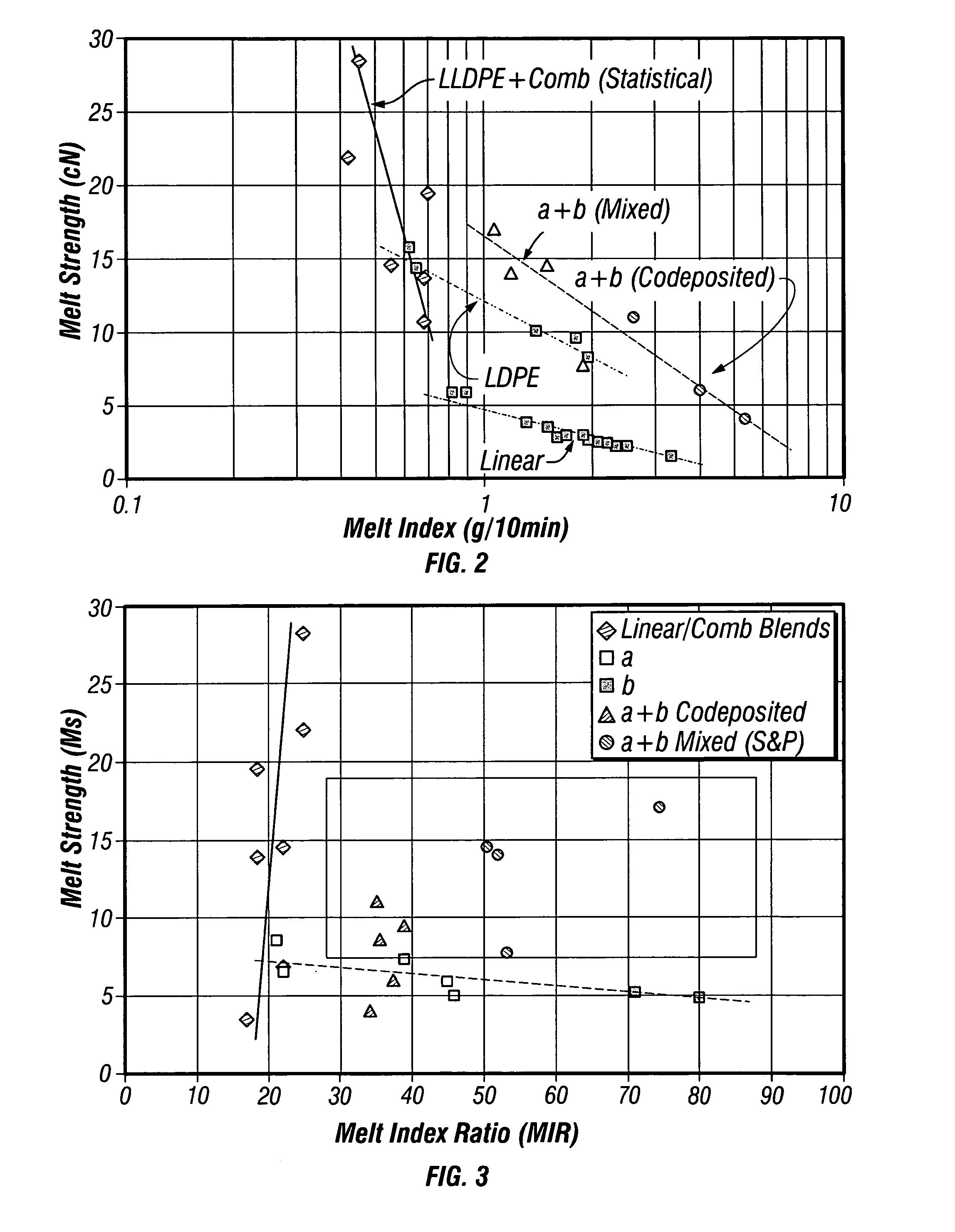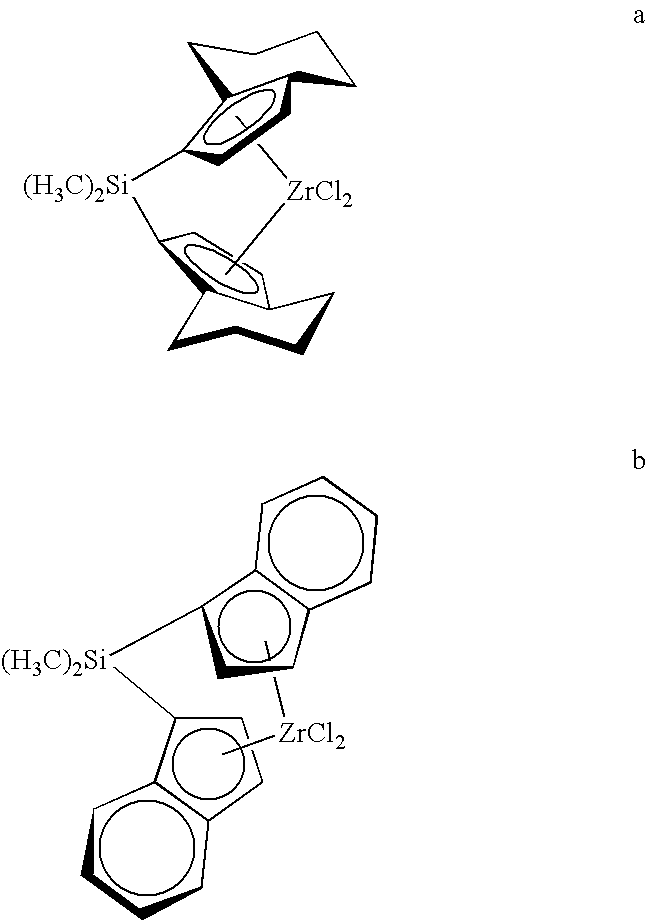Linear low density polyethylenes with high melt strength and high melt index ratio
a low-density polyethylene, high-temperature technology, applied in the field of low-density polyethylenes, can solve the problems of high motor load and torque requirements of extruders, lack of melt strength, and hammer utilization
- Summary
- Abstract
- Description
- Claims
- Application Information
AI Technical Summary
Benefits of technology
Problems solved by technology
Method used
Image
Examples
Embodiment Construction
Zirconocenes
[0014]A broad range of zirconocenes is contemplated. Zirconocene a is a bridged metallocene having tetrahydroindenyl (THI) ligand system. Zirconocene b is similar to a except for the ligand system which consists of an indenyl ring system. Each or both metallocene component may be substituted. The substituents may independently be linear or branched alkyl groups from one to twenty carbons long, silicon-containing groups, halogenated hydrocarbyl substituents, phenyl and its derivatives, or any group containing nitrogen, phosphorous, boron, sulfur that produce an active catalyst system. Embodiments of our invention include a mixture of dimethylsilyl bis(tetrahydro-1-indenyl)zirconium dichloride and rac-dimethylsilys bis(1-indenyl) zirconium dichloride.
Supports
[0015]The zirconocenes are placed on a support. Supports may be organic or inorganic.
[0016]Organic supports may be finely divided polymer particles, polyethylene and / or polystyrene, alternatively resinous support mater...
PUM
| Property | Measurement | Unit |
|---|---|---|
| melt strength | aaaaa | aaaaa |
| weight percent | aaaaa | aaaaa |
| MI | aaaaa | aaaaa |
Abstract
Description
Claims
Application Information
 Login to View More
Login to View More - R&D
- Intellectual Property
- Life Sciences
- Materials
- Tech Scout
- Unparalleled Data Quality
- Higher Quality Content
- 60% Fewer Hallucinations
Browse by: Latest US Patents, China's latest patents, Technical Efficacy Thesaurus, Application Domain, Technology Topic, Popular Technical Reports.
© 2025 PatSnap. All rights reserved.Legal|Privacy policy|Modern Slavery Act Transparency Statement|Sitemap|About US| Contact US: help@patsnap.com



